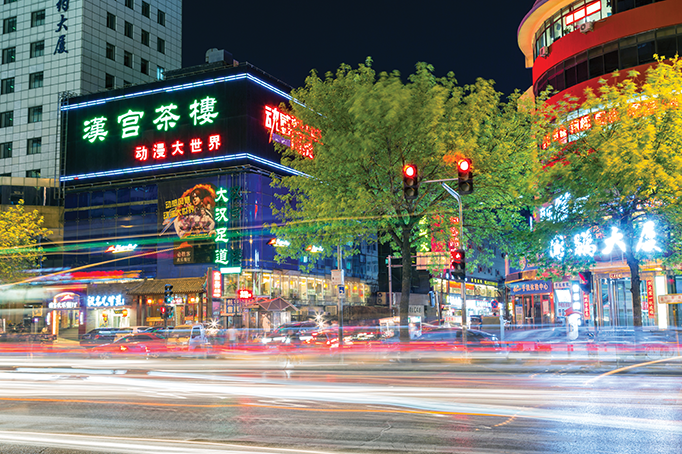
Internet surfers are familiar with viral images of Chinese “ghost malls” plagued by vacancies and empty of shoppers. And indeed, according to a September 2015 report by Deloitte and the China Chain Store Association, the country’s brick-and-mortar retail sector continues to struggle. The report, titled China Retailing Power 2015, cites such challenges as overbuilding (China now has an estimated 4,000 malls), rising vacancy rates, the economic slump, curtailed retailer expansion plans, higher operating costs and booming Internet sales competition.
These trends have certainly translated into fewer opportunities for architects and developers working in China, says Norm Garden, executive vice president of international architecture firm CallisonRTKL. Slowdowns in the approval process are now common as well, he says, because of Chinese President Xi Jinping’s crackdown on corruption. “Earlier this year one of my colleagues from China indicated that throughout China something like 110,000 planning officials had been carted off to jail,” Garden said. “Everything just kind of grinds to a halt.”
Nonetheless, new retail projects are still happening in fast-growing Chinese cities like Changdou, Dachong, Shenyang, Shenzen and Wenzhou, Garden says. All told, CallisonRTKL has worked on about 30 mixed-use projects across the country on behalf of state-owned conglomerate China Resources Land, Garden says. Often built in conjunction with major master-planned developments, these properties fall under CR Land’s MixC brand. One of the newest is Dachong MixC World, a mixed-use complex set to open in Dachong, Guangdong province, in September 2017. It is part of a much-larger growth plan for the former fishing village, Garden says. “CR Land hired CallisonRTKL to do a 70-hectare master plan in Dachong,” he said. “It is basically like designing a city.” To serve more than 20,000 families, CallisonRTKL is drawing up high streets, plazas, a 1 million-square-foot mall and neighborhood shopping centers to boot. All told, Dachong MixC World will contain 603,000 square feet of outdoor street retail. “There’s an amazing mass of different forms of retail,” Garden said. Other elements, some designed by London-based Foster & Partners, include a 10-hectare downtown as well as schools, offices and high-rise condos. Another new MixC will open in Wenzhou, in southeastern Zhejiang province, in April 2017. According to Garden, it will be a more conventional development of about 2 million square feet.
Meanwhile, development opportunities are opening up in Southeast Asia markets, Garden adds. Multinationals continue to flock to the English-fluent Philippines, in particular, to open call centers, otherwise known as business-process offices. “I spend a lot of time in the Philippines, and the country is booming — absolutely on fire,” he said. But gridlock often forces these companies to move outside Manila’s older business districts. As a result, Garden says, the trend is spurring development in the likes of South Luzon, Cebu City and Davao City. Landlords are also responding to growing demand by building master-planned communities around business-process offices. Garden cites the 10-hectare Capitol Commons, the second phase of which is now under construction in Pasig, in metro Manila. CallisonRTKL designed the master-planned community with roughly 1 million square feet of uses, including new mall Estancia at Capitol Commons. Hypermarket chain Unimart is among the anchors. In a city with precious little green space for the public, however, Capitol Commons’ one-hectare park is a major draw as well. “It became a home run — the attractor that really brought people here,” Garden said. “Capitol Commons is a raging success story.”

